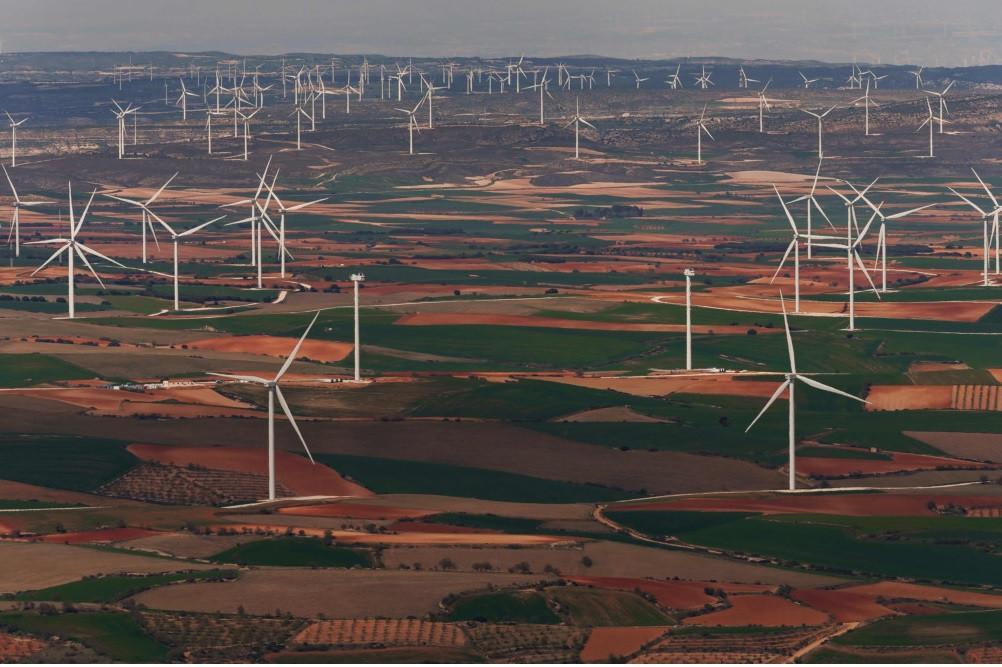
Wind power became the main source of electricity production in Spain last year, accounting for 23 percent, ahead of nuclear (21 percent) and gas (17 percent), according to national grid operator REE.
The sector “benefits from a favorable situation” although “brakes” remain on its development, such as a dependency on government auctions, said Francisco Valverde Sanchez, renewables specialist at electricity consultants Menta Energia.
Following a boom in the 2000s thanks to generous public financial aid, the sector suffered a sudden halt when subsidies were slashed in 2013 during Spain’s economic crisis.
It has since charged ahead. Spain, which has a total of 1,265 wind farms, had an installed wind power capacity of 28.1 gigawatts in 2021, up from 23.4 gigawatts in 2018, according to industry group AEE.
With large swathes of sparsely populated land, a favorable legal framework and cutting edge wind turbine makers, Spain is one of the most “interesting” markets for wind power investors, said AEE director general Juan Virgilio Marquez.
Spain is home to several sector heavyweights such as Iberdrola and Naturgay, making it a top exporter of wind power equipment. “This explains the dynamism of the sector,” Marquez told AFP.
“We are on suitable ground here,” said Joaquin Garcia Latorre, project director at Enel Green Power Espana, pointing to gigantic masts erected on the heights of the tiny northeastern village of Villar de los Navarros.
The Spanish-Italian firm picked this spot, which is well exposed to the wind, to set up a 180-megawatt wind farm, one of the country’s biggest.
Dubbed Tico Wind, its 43 wind turbines started producing power in November, said Latorre, while workers around him tended to the turbines, which are over 100 meters high.
“There are between 2,500 and 3,000 hours of wind here per year,” he added.
The wind farm will be able to produce 471 gigawatt hours per year - enough to meet the demands of 148,000 households - after it becomes fully operational in a month.
These types of projects have popped up across Spain in recent years, making it Europe’s second-biggest wind power producer after Germany for installed capacity and the world’s fifth biggest.
Investor interest has even come from outside of the energy sector.
In November, Spain’s Amancio Ortega, the founder of fast fashion giant Zara and one of the world’s richest people, injected 245 million euros ($268 million) in a wind farm in the northeastern region of Aragon.
Spain has pledged to generate 74 percent of its electricity from renewable sources by 2030, up from 47 percent in 2020.
To meet this target, Spain is counting on the development of offshore wind power, a sector that is in its infancy. But since Spain has thousands of kilometres of coastline, offshore wind has lots of room to grow.
Nearly 600 wind power projects are currently under study by the government, according to AEE.
As part of its plan to respond to the economic fallout from Russia’s invasion of Ukraine, Spain has pledged to speed up the approval of wind power projects of less than 75 megawatts.
“Our country had enough natural resources to become Europe’s leading producer and exporter of renewable energy,” Prime Minister Pedro Sanchez said on April 6, adding this could be key to help the European Union meet its goal of “energy independence.”
Since Russia invaded Ukraine on Feb. 24, Brussels has declared a mission to cut the EU’s Russian gas imports by two thirds this year and to end the use of Russian gas by 2027.
Spain “could become the energy ’breadbasket’ of Europe,” said Virgilio Marquez.